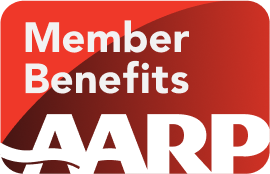AARP Hearing Center
The first tribal citizen to serve as director of the National Park Service (NPS), Chuck Sams, 52, is eager to ensure that future generations feel a strong connection to nature and history. As NPS prepares to commemorate the 107th anniversary of its founding on Aug. 25, Sams shares how the outdoors shaped his childhood, what he loves about his job and why he wants to hear your national park story.
Were you an outdoorsy kid?
Absolutely. I’m a Gen X-er 1970s kid whose parents ensured that you stayed outside until the sun went away. And then you got up early in the morning and got your chores done and went right back outside all day. I grew up on the Umatilla Indian Reservation in northeast Oregon [Sams is Cayuse and Walla Walla and is an enrolled member of the Confederated Tribes of the Umatilla Indian Reservation in northeast Oregon; he also has blood ties to the Cocopah Tribe and Yankton Sioux of Fort Peck] and was very fortunate to have a strong upbringing and land ethic that told me that we were responsible for stewarding the flora and fauna. What better way to do that than being outside all the time, playing in the dirt, playing in the creeks and the rivers all times of the year.
Did you have any idea that your love of the outdoors could be channeled into a career?
Absolutely not. I grew up originally in what they call “the projects” on the Umatilla Indian Reservation. I was very fortunate to have two parents who had finished their associate’s degrees in the 1960s. They were a rare commodity in themselves in that they were two Native Americans who actually had gone to college and finished two-year degrees. They had worked hard to figure out how to get us to a middle-class lifestyle. They wanted to be sure that we grew up on a reservation — which turned out to be my father’s reservation — so that we would grow up with traditional values that have been with us for thousands of years.
In the early days of the COVID-19 pandemic, it seemed as if people were rediscovering the outdoors.Absolutely, and during COVID, my own family [wife Lori Lynn and their four children, ages 23, 22, 19 and 10], we spent a lot of time out on the reservation on the Umatilla River, on the Columbia River, on the Walla Walla River — spending time out in nature. We also made travels over to Whitman Mission National Historic Site and down to John Day Fossil Beds in central Oregon, both run by the National Park Service, because we knew those sites were still open and you could get outside and get an education while being able to enjoy recreational opportunities.




































































